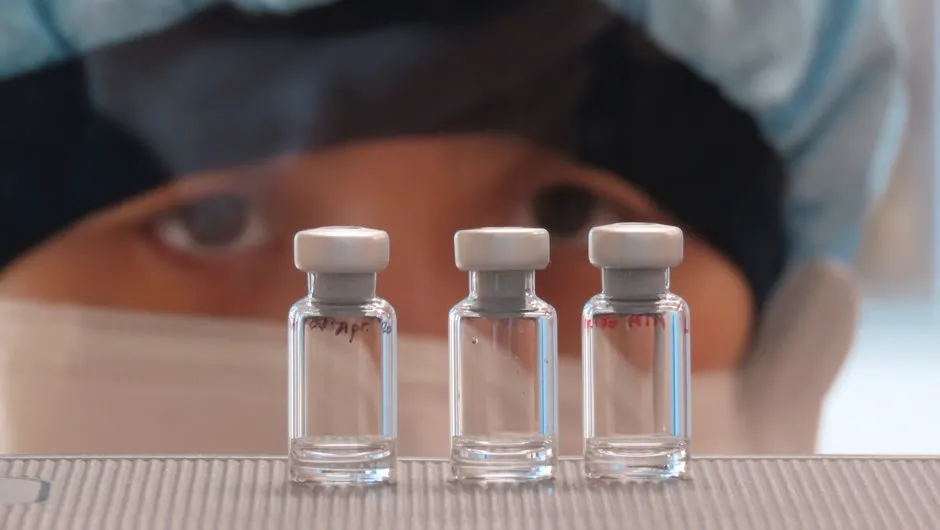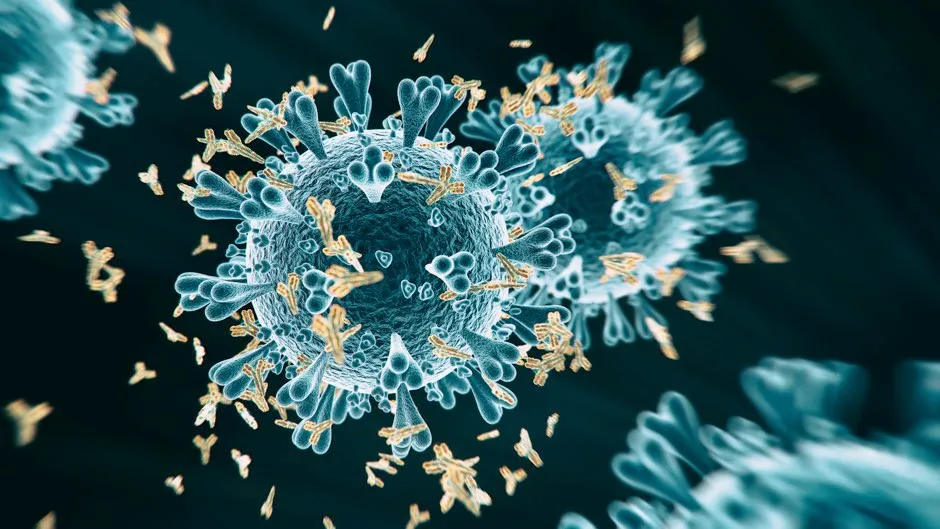The COVID-19 vaccine being developed at the University of Oxford is safe and induces an immune reaction, preliminary results of the study suggest.
Researchers say their tests have revealed that the jab could provide double protection against COVID-19.
The early-stage trial found that the coronavirus vaccine is safe and causes few side effects. It also induces strong immune responses in both parts of the immune system – provoking a T-cell response within 14 days of vaccination, and an antibody response within 28 days.
Compared with the control group of those given a meningitis vaccine, the COVID-19 vaccine caused minor side effects more frequently, according to the study.
But some of these could be reduced by taking paracetamol, the researchers said, adding that there were no serious adverse events from the vaccine.
Read the latest coronavirus vaccine news:
- Coronavirus vaccine: 105 people take part in Imperial COVID-19 trial
- COVID-19 vaccine ready in first half of 2021 if trials go 'really well'
- New method protects vaccines from heat degradation
- Coronavirus vaccines: Where are we now?
Co-author Professor Sarah Gilbert, of the University of Oxford, said: “There is still much work to be done before we can confirm if our vaccine will help manage the COVID-19 pandemic, but these early results hold promise.
“As well as continuing to test our vaccine in phase three trials, we need to learn more about the virus – for example, we still do not know how strong an immune response we need to provoke to effectively protect against SARS-CoV-2 [the virus that causes COVID-19] infection.
“If our vaccine is effective, it is a promising option as these types of vaccine can be manufactured at large scale.
“A successful vaccine against SARS-CoV-2 [the name of the virus that causes COVID-19] could be used to prevent infection, disease and death in the whole population, with high-risk populations such as hospital workers and older adults prioritised to receive vaccination.”
The current results focus on the immune response measured in the laboratory, and further testing is needed to confirm whether the vaccine effectively protects against infection.
An ideal coronavirus vaccine should be effective after one or two vaccinations and work in target populations including older adults and those with other health conditions, researchers say.
They add that it should confer protection for a minimum of six months, and reduce onward transmission of the virus to contacts.
However, the experts warn that the current trial, published in The Lancet, is too preliminary to confirm whether the new vaccine meets these requirements.
Read more on the coronavirus:
- Synairgen drug 'prevents 79 per cent' of coronavirus cases progressing
- Is the coronavirus airborne?
- Coronavirus may have ‘devastating impact’ on the heart
Phase two trials taking place in the UK and phase three trials in the UK, Brazil and South Africa will confirm whether it effectively protects against the virus.
The trial included 1,077 healthy adults aged 18-55 years with no history of COVID-19, and took place in five UK hospitals between 23 April and 21 May.
The data included in the paper covered the first 56 days of the trial and is ongoing.

The participants either received the new vaccine (543 people), or the meningitis vaccine (534 people).
Some of them – 56 given the vaccine, and 57 in the control group – were also asked to take paracetamol before and for 24 hours after their vaccination to help reduce vaccine-associated reactions.
All volunteers gave additional blood samples and underwent clinical assessments to determine if the vaccine was safe and whether it provoked an immune response.
The most commonly reported reactions were fatigue and headache, but some participants also reported pain at the injection site, muscle ache, malaise, chills, feeling feverish, and high temperature.
In addition, in the 10 people who received the extra dose of the COVID-19 vaccine, side effects were less common after the second dose.
The research found that the vaccine stimulates an antibody and T-cell response.
Antibodies are proteins produced by the blood in response to antigens, which are harmful substances that come from outside the body, such as from viruses or bacteria.
If the non-specific immune cells that respond to any invader cannot instantly tackle it, the T-cells come into play.
They take two forms – helper T-cells and killer T-cells. The latter attack the virus directly.

T-cell responses targeting the SARS-CoV-2 spike protein were markedly increased in the 43 participants studied, peaking 14 days after vaccination. This level declined slightly by day 56 of the trial.
Researchers also found that the T-cell response did not increase with a second dose of the vaccine.
Antibody responses in those given a single dose peaked by day 28, and remained high until the measurement at day 56 in the trial. This response was boosted by a second dose.
Four weeks after vaccination, neutralising antibody responses against SARS-CoV-2 were detected in 32 of 35 participants who received a single dose of the vaccine.These responses were also present in all participants who had a booster dose of the vaccine.
The authors note a number of limitations to their study, saying more research is needed to confirm their findings in different groups of people – including older age groups, those with other health conditions, and in ethnically and geographically diverse populations.
In the current trial, 91 per cent of participants were white and the average age of participants was 35 years.
How do scientists develop vaccines for new viruses?
Vaccines work by fooling our bodies into thinking that we’ve been infected by a virus. Our body mounts an immune response, and builds a memory of that virus which will enable us to fight it in the future.
Viruses and the immune system interact in complex ways, so there are many different approaches to developing an effective vaccine. The two most common types are inactivated vaccines (which use harmless viruses that have been ‘killed’, but which still activate the immune system), and attenuated vaccines (which use live viruses that have been modified so that they trigger an immune response without causing us harm).
A more recent development is recombinant vaccines, which involve genetically engineering a less harmful virus so that it includes a small part of the target virus. Our body launches an immune response to the carrier virus, but also to the target virus.
Over the past few years, this approach has been used to develop a vaccine (called rVSV-ZEBOV) against the Ebola virus. It consists of a vesicular stomatitis animal virus (which causes flu-like symptoms in humans), engineered to have an outer protein of the Zaire strain of Ebola.
Vaccines go through a huge amount of testing to check that they are safe and effective, whether there are any side effects, and what dosage levels are suitable. It usually takes years before a vaccine is commercially available.
Sometimes this is too long, and the new Ebola vaccine is being administered under ‘compassionate use’ terms: it has yet to complete all its formal testing and paperwork, but has been shown to be safe and effective. Something similar may be possible if one of the many groups around the world working on a vaccine for the new strain of coronavirus (SARS-CoV-2) is successful.
Read more:
